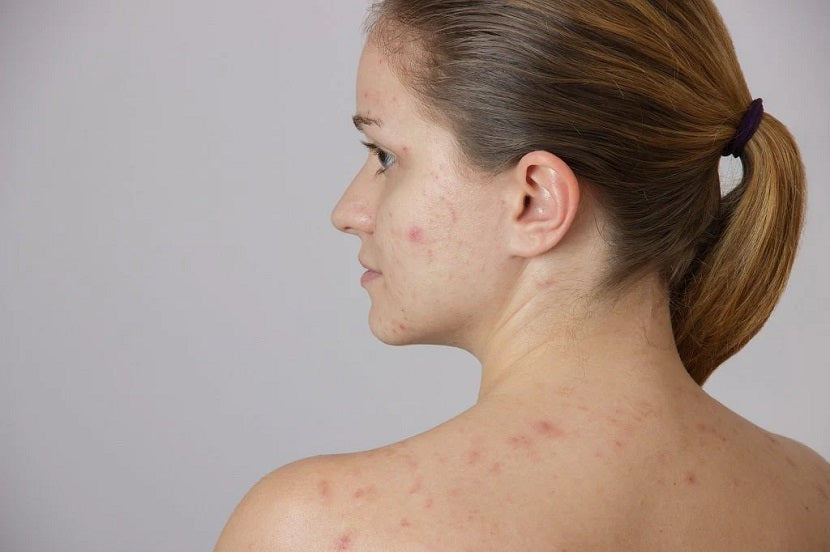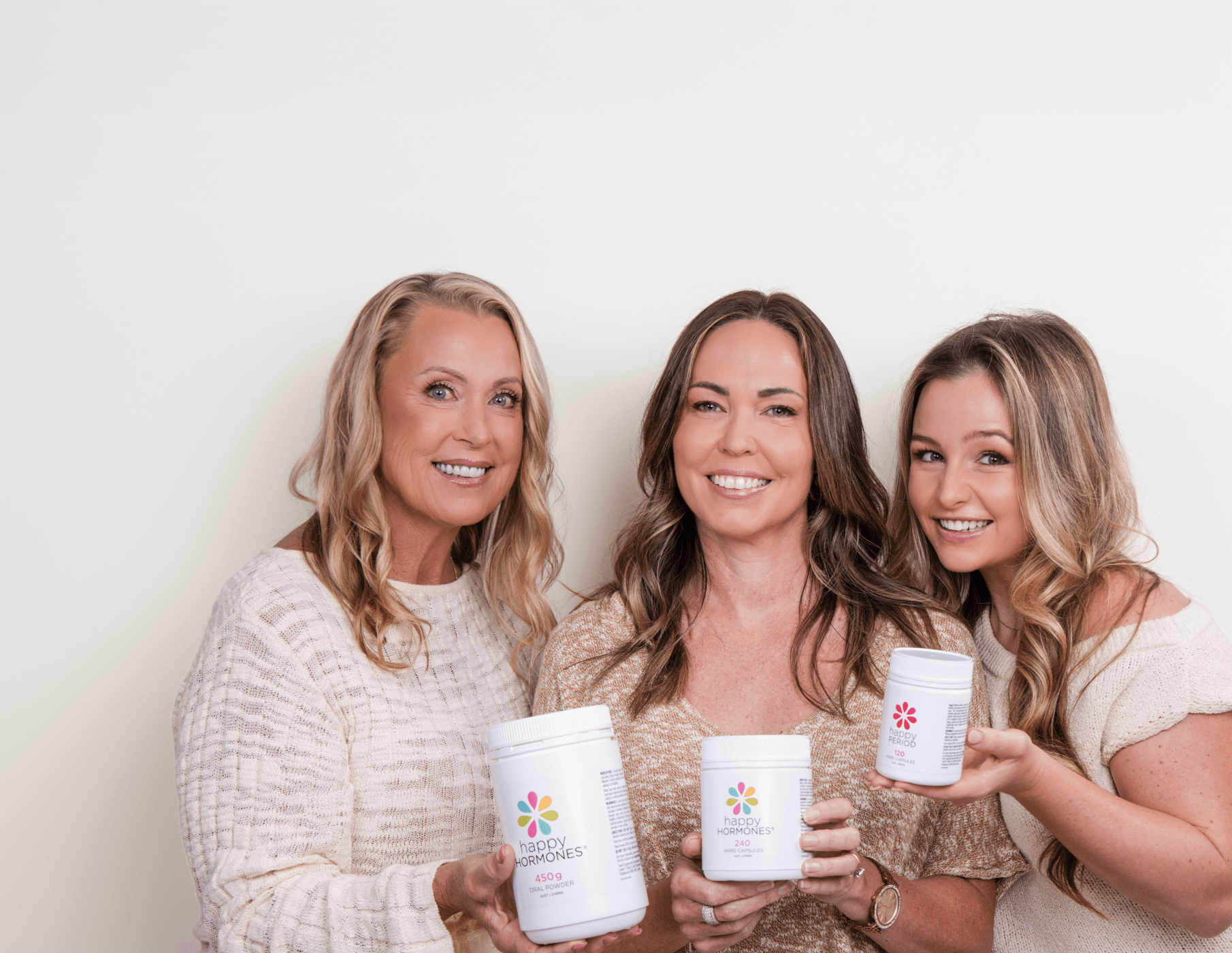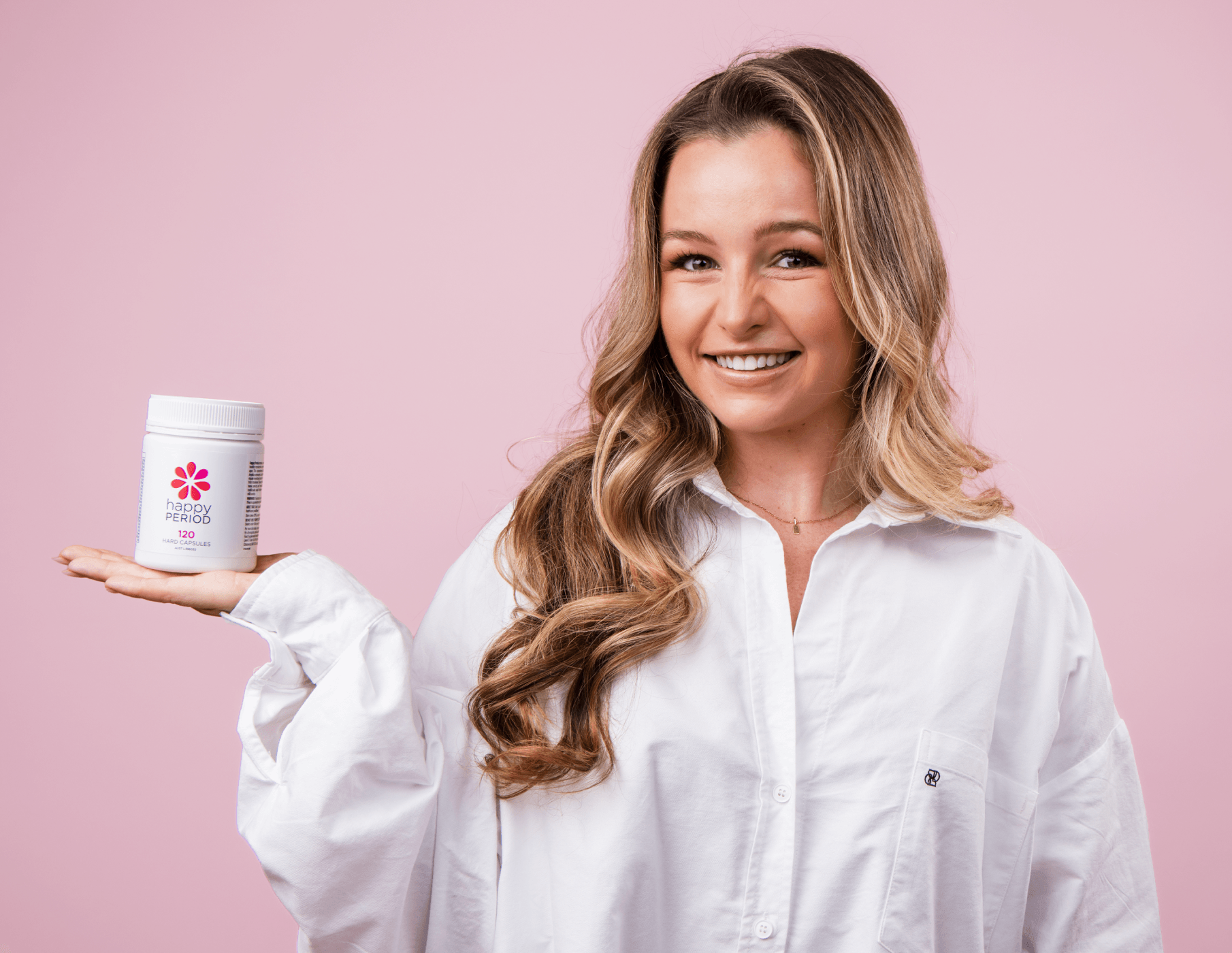Can PCOS Cause Acne?
By Renee Grandi

For women suffering from polycystic ovarian syndrome (PCOS), acne is a key symptom of this condition. If you have been diagnosed with PCOS, you may also be dealing with other symptoms such as hirsutism (facial hair and male pattern balding), weight-gain, insulin resistance, depression, anxiety, absent periods, anovulation, fertility issues and even chronic fatigue.
This is not easy to deal with, however, research is identifying that PCOS can manifest from different reasons:
- Contraception use
- Long-term stress
- Chronic inflammation
- Genetic predispositions
- Insulin resistance
The Relationship Between PCOS and Acne
PCOS diagnosis is based upon two or more of the three diagnostic criteria:
- Ovulatory dysfunction - absent periods or chronic missed periods
- Polycystic ovaries - cysts found on the ovaries via ultrasound
- Excess androgens - (total testosterone and free testosterone)
The hyperandrogenism of this condition is what significantly increases your chances of acne, especially painful and cystic jawline acne. So what are the mechanisms behind these frustrating imbalances? The more information you acquire regarding the condition, the more you can understand where to nourish your imbalances. This is when healing truly begins.
The Hypothalamic-Pituitary (HP) Axis
In your brain lies two very important hormonal regulators: the hypothalamus and the pituitary gland. The hypothalamus is a major control centre for your everyday activities sending out regular pulsations to understand what’s going on in your environment (e.g. dietary intake, stress, internal mechanisms, etc.) It communicates this with the pituitary gland which identifies where to send the message along (ovaries, thyroid, temperature control, digestive organs and so forth). Ovarian dysfunction is strongly influenced by the external environment, how we perceive the world and how we internally handle this information.
Testosterone and the ovaries
The HP axis is looking for environmental feedback. Within these pulsations, there is increased secretion of luteinising hormone (LH). Often, LH is 2 to 3+ times higher than its synergistic counterpart follicle stimulating hormone (FSH). LH stimulates the ovaries to produce more testosterone, follicles and oocyte (immature egg) development. This can be identified in pathology – it’s about the ratios of these hormones, not just their individual numbers.
If you also have insulin resistance, it’s a double whammy for ovulatory overstimulation. We require insulin to help balance our sex hormones and bind them to sex hormone-binding globulin so they aren’t flowing rampantly in our blood.
Now for another hormone, adrenocorticotropic hormone (ACTH). ACTH will increase your androstenedione and that little hormone is responsible for half of your circulating testosterone.
The influence of stress and cortisol on the ovaries
The adrenal glands are what keep you pushing when you’re fatigued, stressed, scared, angry and all things in-between. Cortisol is essential to our survival and shouldn’t be demonised; however, excess of anything is going to predispose you to imbalances. In this case, cortisol is going to suppress ovarian function and increase your blood sugars as a defence mechanism. The ovaries also have insulin receptors that can influence testosterone and ovarian functionality.
In the adrenal gland androstenedione is either converted to cortisol or testosterone, so now you are vulnerable to both your ovaries and adrenal glands producing too much testosterone and causing all those frustrating symptoms.
PCOS and your skin
Your skin is key for metabolising androstenedione and testosterone. Skin works closely with hormones and expresses its own enzymes and receptors to metabolise them. Sebocytes (cells that create oil) and sebaceous glands within the skin have receptors for dihydrotestosterone. Androgens not only stimulate sebocytes but also increase acne associated inflammation. Your skin is actually trying to help your body breakdown androgens – it’s well equipped for this!
‘Skin diabetes’ is another term associated with acne. Insulin and blood sugar dysregulation is common in PCOS. Balancing blood sugars with a low GI diet can significantly reduce acne.
In order to understand the multifactorial and polygenic manifestation of PCOS, you must consider the nature of the dysfunction within the ovary and the external influences that prevail to modify ovarian behaviour. What is your environment? Are you chronically stressed? Are the people around you kind or constantly putting you down? Do you have a healthy diet and lifestyle?
It’s time for introspection.

How to naturally support PCOS-related acne
-
Focus on stress reduction.
If you’re constantly finding yourself overthinking, depressed, anxious or unable to cope with your environment, stress reduction is a key strategy to implement. Keep a journal to identify triggers (people, work, diet, environment). Find something you are passionate about and incorporate 30 minutes of meditation, yoga, Epsom salt baths, or deep breathing. This is really important.
-
Significantly reduce your sugars and high-carb foods.
Eliminate all processed foods, wheat, gluten, and dairy. Try to avoid overdoing it on starchy veggies (potatoes, pumpkin, sweet potato, beetroot) or white rice.
-
Aim to have 90% wholefoods. Half a plate of green vegetables, lots of colour, get creative! To help you out, check our latest HAPPY HEALTHY YOU book which contains over a hundred delectable, wholefood recipes.

-
Implement a celery, cucumber and ginger juice each morning on an empty stomach. This will really help to cleanse the digestive organs, balance hormones and alkalise your blood.
-
Supplement to support hormones and testosterone reduction. Happy Hormones is ideal for this. It contains a carefully selected range of herbs to balance blood sugars, stress, oestrogen, progesterone and testosterone.

-
Myo-Inositol is a great nutritive supplement to enhance ovarian function. It’s recommended to take 4g per day (split the dose into 2g, 2 x per day with food).
-
Increase hormonal supportive teas. Take two cups of spearmint tea per day – this is specific to reducing testosterone and tastes great, too! Cinnamon and green tea can also help to balance blood sugars.
-
Avoid overeating. Binging and/or purging can significantly alter insulin sensitivity. Try to eat until you are 80% full and then stop. This will help balance the digestive system if you’ve been putting too much pressure on your pancreas and insulin response. If you are binge eating read this article to help identify causes.
-
Happy Greens and Happy Turmeric should be taken daily to address inflammation and support liver function, digestion, probiotics and overall vitality.
-
Ensure adequate sleep. Sleep is a time for healing and regeneration in every aspect of your biology so really aim to get your eight hours.
- Ensure appropriate pathology testing to keep track of LH, FSH, oestrogen, progesterone, testosterone, DHEA, androstenedione, prolactin, insulin, glucose, Vitamin D, Vitamin B12, Iron, cortisol, liver panel, CBC, thyroid panel, and cholesterol. This will give you a clear understanding of what is currently going on behind the scenes and help to determine what type of PCOS you have.
Honest self-analysis will help you identify key areas to target for nourishment and cease the self-perpetuating cycle of your ovarian dysfunction.
PCOS and acne can be undeniably hard and frustrating, so try to remember to be on our own team. You will get through this – your hormones and skin can rebalance. If you’re looking for one-on-one guidance and specific treatment protocols, check out our online clinic to book in with one of our passionate practitioners.
Want to learn more about PCOS? You might be interested in our article on How to Manage PCOS Naturally.
REFERENCES
Abbott DH, Dumesic DA, and Levine, JE. (2019) Hyperandrogenic origins of polycystic ovary syndrome – implications for pathophysiology and therapy. Expert Review of Endocrinology & Metabolism. Mar; 14(2): 131–143.
https://dx.doi.org/10.1080%2F17446651.2019.1576522
Arentz, SA, Abbott JA, Smith CA, and Bensoussan A. (2014) Herbal medicine for the management of polycystic ovary syndrome (PCOS) and associated oligo/amenorrhoea and hyperandrogenism; a review of the laboratory evidence for effects with corroborative clinical findings. BMC Complementary and Alternative Medicine. 14: 511.
https://dx.doi.org/10.1186%2F1472-6882-14-511
Baskind, NE and Balen AH. (2016) Hypothalamic–pituitary, ovarian and adrenal contributions to polycystic ovary syndrome . Best Practice & Research Clinical Obstetrics & Gynaecology. Nov;37:80-97.
https://doi.org/10.1016/j.bpobgyn.2016.03.005
Goodarzi, MO, Carmina E, Azziz R. (2015) DHEA, DHEAS and PCOS. The Journal of Steroid Biochemistry and Molecular Biology. Jan;145:213-25.
https://doi.org/10.1016/j.jsbmb.2014.06.003
Ju et al. (2017) Sex hormones and acne. Clinics in Dermatology. Mar-Apr;35(2):130-137.
https://doi.org/10.1016/j.clindermatol.2016.10.004
Laganà et al. (2018) Inositol in Polycystic Ovary Syndrome: Restoring Fertility through a Pathophysiology-Based Approach. Trends in Endocrinology & Metabolism. Nov;29(11):768-780.
https://doi.org/10.1016/j.tem.2018.09.001
Rosenfield, RL and Ehrmann DA. (2016) The Pathogenesis of Polycystic Ovary Syndrome (PCOS): The Hypothesis of PCOS as Functional Ovarian Hyperandrogenism Revisited. Endocrine Reviews.
https://doi.org/10.1210/er.2015-1104
Schneider, MR and Paus R. (2010). Sebocytes, multifaceted epithelial cells: Lipid production and holocrine secretion. The International Journal of Biochemistry & Cell Biology. Feb;42(2):181-5.
https://doi.org/10.1016/j.biocel.2009.11.017









Leave a comment
This site is protected by hCaptcha and the hCaptcha Privacy Policy and Terms of Service apply.